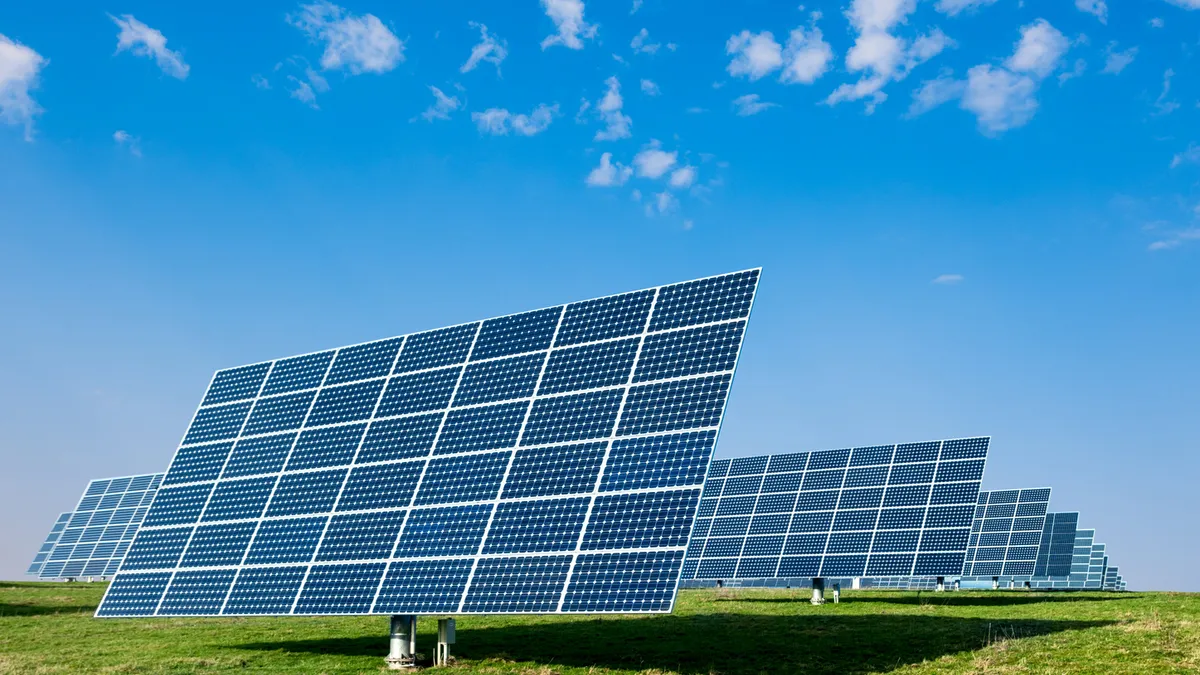Dive Brief:
- Maryland regulators this week approved final regulations to establish a three-year community solar pilot program in the state, stressing that the emphasis will be on bringing the benefits of renewable generation to low and moderate-income customers.
- The new regulations are expected to be published July 8 and will become final 10 days after. They stem from legislation signed last year by Gov. Larry Hogan.
- The three-year pilot will allow renters to contract for solar energy, and includes about 60 MW for projects focused on low and moderate income customers out of a state-wide 200 MW cap.
Dive Insight:
Four months after the Maryland Public Service Commission proposed draft guidance for community solar plans, the PSC has finalized new rules that will expand renewable energy in the state.
“This pilot program will implement the General Assembly’s desire to increase access to solar electricity for all Maryland ratepayers, especially low and moderate income customers,” PSC Chair W. Kevin Hughes said in a statement. “In addition, it will encourage private investment in Maryland’s solar industry and diversify the state’s energy resource mix," helping to meet the state’s renewable portfolio standard and emissions reductions goals.
According to the North Carolina Clean Energy Technology Center, 14 states and Washington D.C. have community solar policies, with Maryland becoming the latest to join the group.
The regulations will provide access to solar-generated electricity in a manner "similar to rooftop solar and net metering," regulators said, but without requiring property ownership. The plan is designed to incentivize solar companies to provide service to low- and moderate-income customers, and to attract new clean energy investment in Maryland.
The state set a cap of 200 MW of the three-year pilot, with 60 MW set aside for low- and moderate-income customers. Regulations also created a separate program capacity for small systems and systems built on brownfields, parking lots or industrial areas, and allows for smaller and rural service territories to make use of existing solar facilities.
The PSC said the new rules include significant consumer protections, and allow commission staff to collect data to study community solar's impact on Maryland’s grid.
A report last year from GTM Research found community solar was expected to grow 59% annually through 2020, hitting installed U.S. capacity of 534 MW.















